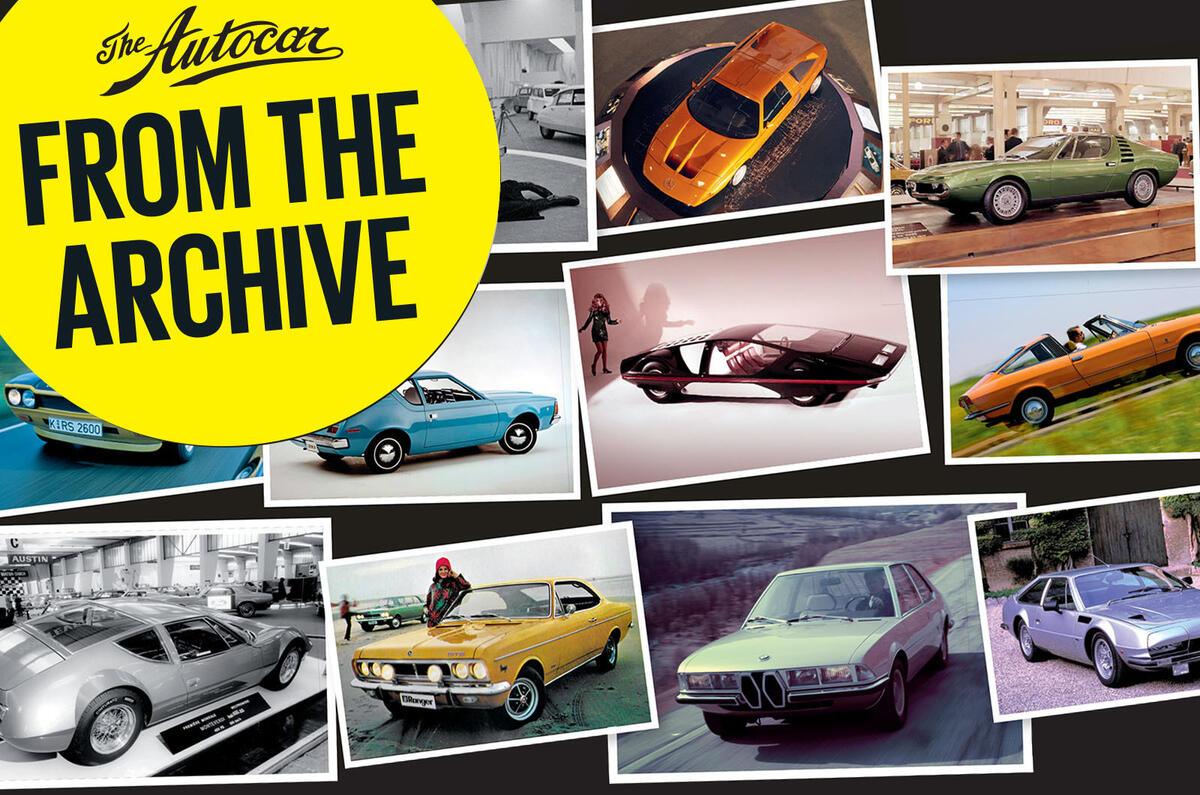After 119 years, the future of the Geneva motor show is uncertain.
At its peak, it hosted more than 1300 firms and 660,000 people. But times have changed, to the great regret of industry figures and enthusiasts.
Let’s cheer ourselves up by looking back at one of the finest Geneva shows: 1970, when ‘electrifying’ referred to the effect of multifarious new V8 coupés on petrolheads.
Usually there’s a standout star of the show, but here it’s impossible to pick. However, “without doubt the most interesting technically”, we said, was the Citroën SM. Yes, a highly innovative, very complex, gorgeous GT with a Maserati V6 engine made by a financially troubled volume brand. Mad.
“Whenever we plan a new car, we like to achieve the impossible,” explained new president Claude-Alain Sarre. “This time, the object was to produce a different type of sports car. You would not let the grocery man on the corner handle a Ferrari or a Lamborghini. But he will be able to drive the SM.”
“Ours is probably the safest and the most comfortable GT anyone could hope to build today,” added chief engineer Jacques Né.
Their claims were borne out, but the SM ruined its maker. Peugeot saved it, of course, but never again would there be a luxury Citroën.
Oh, and the whole ‘women doing yoga in dresses and high heels’ thing seen on the stand? No idea!
The latest grocer killer from Sant’Agata was the Jarama 2+2 GT, which matched its Islero forebear’s 3.9-litre V12 mechanical package with a shortened version of the Espada’s punt chassis.
As for its success, just know that it was the absolute favourite car of Ferruccio Lamborghini himself.
From Maranello was a concept “that had to be seen to be believed”: the Pininfarina-penned Modulo – an extremely low, wedge-shaped vision of the future based on the 512 S sports prototype racer.
In 2014, it was restored for Jim Glickenhaus of SCG, who actually now drives it on the road. Legend.
Another exciting GT, this one with a V8, came from Alfa Romeo: the Montreal – a production version of an unnamed concept that had appeared at Expo ’67 in Canada. That had used the chassis and 1.6-litre four-pot of the everyday Giulia, but now Bertone’s suave design cloaked a 2.6-litre V8 from the iconic Tipo 33 sports racer.
It too was a success, our testers later concluding: “It’s a leisurely and restful kind of GT. It displays all the traditional Alfa virtues in its delightful handling, the limitations we were expecting never really showing. It deserves a high place in our list of desirable machines.”
Another mid-engined V8 beauty came from Switzerland’s only car firm. Monteverdi had emerged in 1967 with a talented front-engined 7.0-litre GT, the High Speed, and now diversified with a sports car, the 450bhp Hai (‘shark’ in German).
Just two were built, so we never drove it, but a Classic & Sports Car review in 2013 described it as “like being locked in a tumble dryer” yet “uniquely awe-inspiring”.
Another supercar show star that we wish had made production was Mercedes-Benz’s rotary-engined C111, which since its 1969 debut had received a new shape and a fourth rotor, raising output from 280 to 350bhp and 217 to 289lb ft.
The next German jaw-dropper was BMW’s Garmisch – “another example of the stylists spoiling an otherwise clean and attractive shape by applications of bits and pieces in search of individuality”.
Regardless of our sniffiness, it would strongly influence the first 5 and 3 Series; and in 2019, BMW recreated the lost car from photos and Marcello Gandini’s memories in honour of the Bertone legend.
Talking of coachbuilders, Frua crafted a “very handsome” Opel Diplomat V8 coupé; Michelotti “an extremely elegant” Fiat 125 S saloon; and Moretti five-seat coupé and convertible versions of – you would never guess it – the Fiat 128.
Much more interesting for Brits, though, was Ford’s latest Capri: the competition-ready RS 2600, with an extra 76cc and other uprated parts for 160bhp, plus a load of suspension improvements.
From our own makers came a new fibreglass-bodied Lotus 7 and Chrysler’s Hillman Avenger, to be sold locally as the Sunbeam 1500.
Another weird rebadging was the Swiss-made Ranger A, an Opel Rekord C with a Vauxhall Victor FD face, also built in South Africa and Belgium. General Motors would give up on the experiment in 1978.
To round things off, American Motors showed a small hatchback, the Gremlin. They called it “cute”; Europeans said “are you joking?"




Add your comment